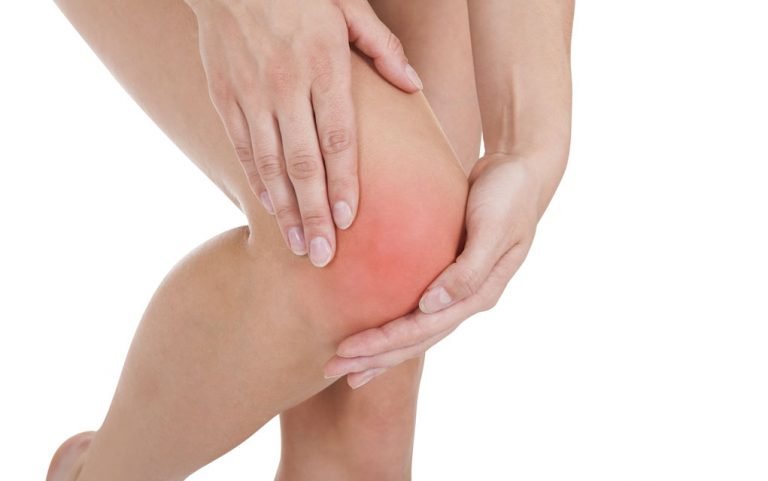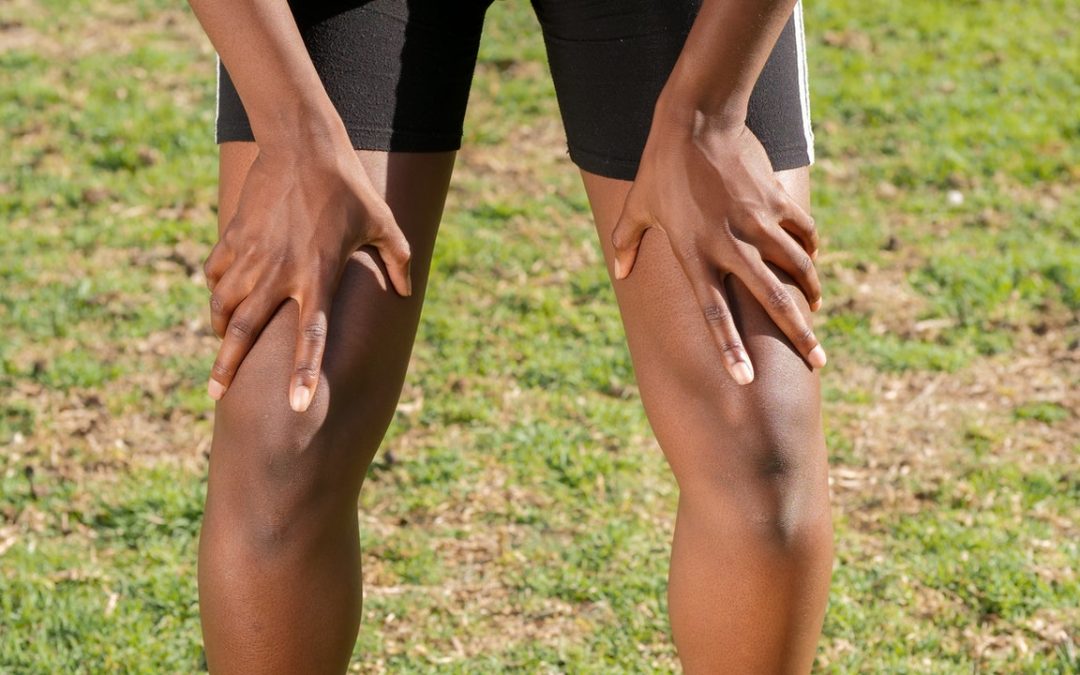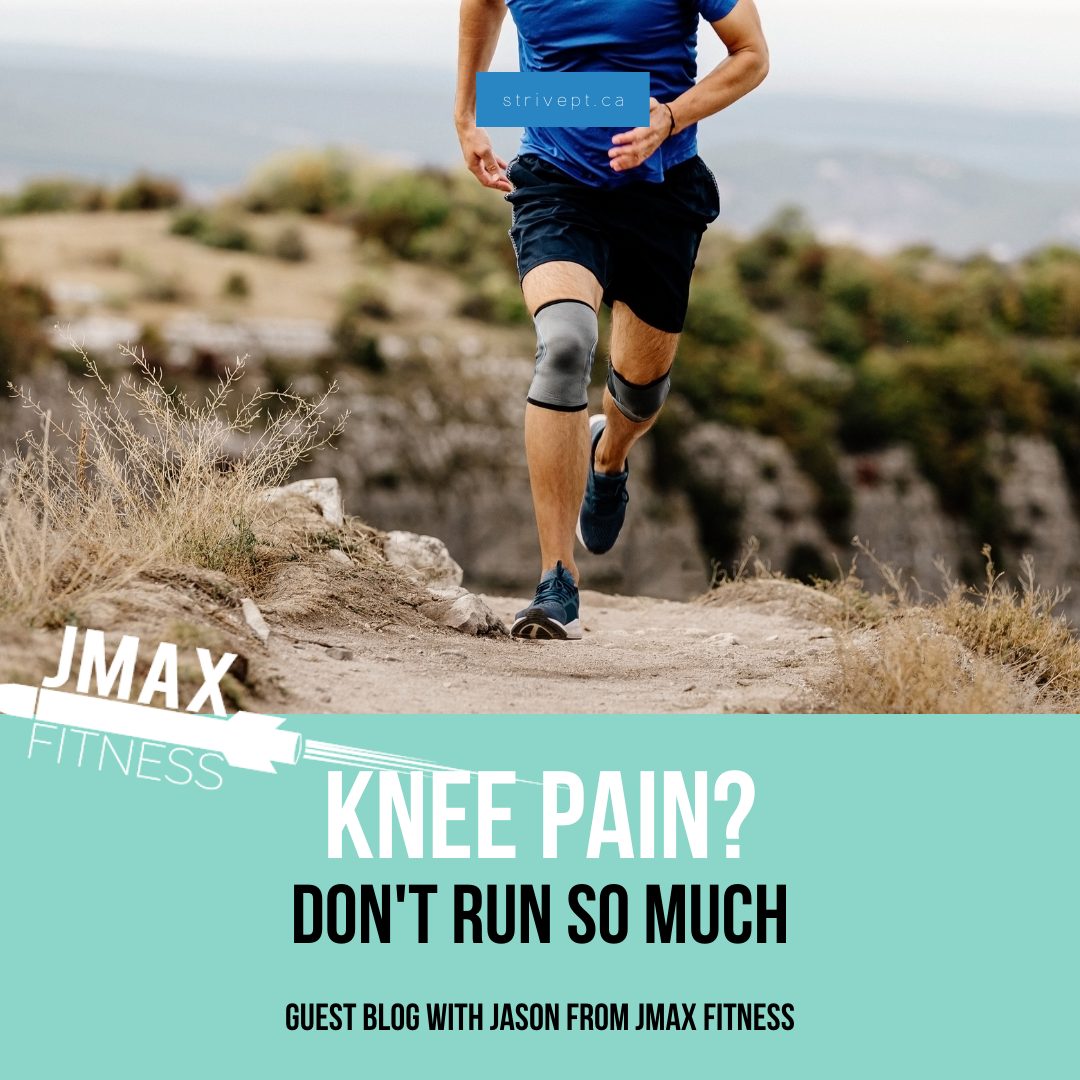Treatment Of Knee Pain
You can treat most knee pain by remembering the word R.I.C.E
-
Rest: If you have knee pain, stop using the joint as much. Yes, youd be able to perform limited sports and movement but dont stress the joint. Rest will allow it to heal and clear the inflammation.
-
Ice: Use ice or cold compresses to ease your pain. This will cause the blood vessels to constrict and decrease the inflammation in the joint.
-
Compression: Use a brace or a compression bandage to keep the swelling at bay.
-
Elevation: Allow gravity to work for you. By elevating your leg, you encourage increased blood return to the knee joint and dont allow any weight on the joint. This will hasten the recovery process.
Pain medications like ibuprofen and acetaminophen are also great for acute pain. You can take these medications if the pain is unbearable.
What Causes Knee Pain In Young Adults
Knee pain in your 20s is often associated with overuse injuries. When the muscles, ligaments or tendons are overworked, pain, stiffness and other symptoms can develop pretty quickly. Tendonitis and bursitis are a couple of overuse injuries that are most commonly associated with strenuous activity. But they can also occur in relatively inactive people who ramp up their activity too quickly. Still, while these types of injuries are fairly common in young adults, theyre not the only causes of knee pain.
Genicular Nerve Block With Radiofrequency Ablation
Instead of more invasive surgical options, many patients turn to a genicular nerve block to treat and diagnose persistent knee pain. A genicular nerve block uses anesthetic injected into one or more of the genicular nerves to interrupt pain signals being sent to the brain.
Unfortunately, a genicular nerve blocks effects only last eight to 24 hours. Doctors use genicular nerve blocks to test the effectiveness of the procedure on a persons knee pain. Many patients who experience relief with genicular nerve blocks will then get radiofrequency ablation. When combined, these two procedures can offer pain relief that lasts anywhere from six months to a year.
Read Also: How To Remove Scar Tissue From Knee Surgery
Runners Knee Or Chondromalacia
Runners knee, also known as chondromalacia, occurs as a result of overuse of the knee joint. It is particularly common among runners and other people who put consistent pressure and stress on their knees.
Chondromalacia occurs when the knee cartilage deteriorates, providing less cushioning to the joint.
The first steps in treatment often involve therapies to help reduce pain and swelling and allow the knee to heal. Some treatments include:
- taking over-the-counter pain relief medications
- applying an ice pack to reduce the swelling
- aligning the kneecap with a brace, kneecap-tracking sleeve, or tape
- resting the knee joint
If the knee does not improve, a healthcare team may recommend arthroscopic surgery. This involves smoothing the cartilage to allow it to heal better.
Pain Behind Knee: Common Causes Symptoms And Treatment

Written byDr. Victor MarchionePublished onNovember 23, 2016
Pain behind knee is not unusual, but it can hurt and limit movement. Developing a clear understanding of pain behind knee causes can be important.
When we refer to pain behind knee, we are really talking about discomfort or soreness behind the knee joint. This uncomfortable feeling can happen to a person who still has movement in their knee or it can severely limit movement. Sometimes, pain behind knee is accompanied by inflammation or a burning sensation. In many cases, the soreness is nothing to worry about. There are situations where the pain does not disappear, and there is swelling or even bruising. If this happens to you, it is important to seek medical attention.
Read Also: How To Regrow Cartilage Naturally
Knee Injury: 6 Things To Do For The Pain
Your plan will depend on your specific injury. Mild to moderate issues will often get better on their own. To speed the healing, you can:
Some people with knee pain need more help. For instance, if you have bursitis, your doctor may need to draw out extra fluid from the bursa in your knee. If you have arthritis, you may need an occasional corticosteroid shot to settle down inflammation. And if you have a torn ligament or certain knee injuries, you may need surgery.
What Causes Knee Pain
Knee pain can have many different causes. Common causes of knee pain include:;
- Overuse injury;
Don’t Miss: How To Strengthen Knee Ligaments
What Causes The Pain
Knee pain can be caused by a variety of issues, from injury to tendonitis to bursitis . But the primary cause of knee pain, according to Dr. Stearns, is usually a form of arthritis.;
People with normal, healthy knees usually dont get pain at night, he says. Theres typically a reason, and its often because they have arthritis, commonly osteoarthritis.;
Osteoarthritis is mechanical in nature, caused by wear-and-tear on the joints as well as the cartilage and tendons associated with the joints. This sets the condition apart from rheumatoid arthritis which is inflammation of the joints, typically caused by an overactive immune system.;
While osteoarthritis is typically seen in older patients, it can occur in younger patients, too, particularly those who are prone to overuse of certain joints or suffered significant injuries like ligament tears.;
Youre Trying To Relax
When your body is at rest, you may notice the mild to moderate pains that you could more easily ignore when your mind was preoccupied with busy thoughts during your waking hours.Additionally, when you sleep, your body produces less cortisol. While high cortisol levels can lead to heart disease, healthier levels can help your body reduce inflammation.
Since most joint pains are caused by or worsened by inflammation, moderate amounts of cortisol can help your body manage this inflammation. But when your body is relaxed, such as when youre trying to go to sleep, your body has less cortisol to mitigate the swelling and irritation in your knees.
Recommended Reading: How To Get Rid Of Cellulite Above My Knees
Osteoarthritis Of The Knee
The most common type of arthritis is osteoarthritis, which is a progressive wearing of the cartilage in the knee joint. It occurs more frequently in people age 50 and older.
After 50, the impact of osteoarthritis can worsen due to accumulated use and the wearing down of cartilage that occurs with age.
Osteoarthritis is often the result of bone rubbing on bone, and yes, thats as painful as it sounds. Osteoarthritis can also be caused by age, weight, genetics, previous injuries, infections, illness , and certain occupations, such as construction and manufacturing.
- deformity and weakness
- pain that worsens over time
According to a 2018 study in Arthritis Research & Therapy, knee pain that lasts more than 1 year is commonly associated with osteoarthritis.
Why Does My Knee Hurt 5 Common Sources Of Knee Pain
Most people experience knee pain at some point in their lives. While some may have only mild or sporadic symptoms, others may experience knee pain so severe that it interferes with daily activities or reduces quality of life. The degree of knee pain youre experiencing usually depends on the complexity of the condition or injury. Here are five possible conditions that are common sources of knee pain.
Read Also: How To Pop Your Knee
Can You Prevent Knee Problems
Not all knee problems are avoidable, but you can lessen your chance of problems by participating in regular strength training. To protect your knees, it’s important to have a very strong core and strong legs, says Dr. Rebecca Breslow, an instructor in orthopedic surgery at Harvard Medical School. Make an effort to perform strength training at least twice a week. In addition, work on increasing joint flexibility, which can also help you head off an injury.
What Causes Pain Under The Knee Cap

Pain under the kneecap can be due to a number of problems. If the pain is felt on the back of the kneecap it is usually a problem with the cartilage on the back of the patella, most typically;Chondromalacia Patella;or;Runners Knee. The pain tends to come on gradually and gets worse after sitting for a while or doing lots of exercise.
If the pain is felt below the kneecap, the most common causes are;patellar tendonitis;or infrapatellar bursitis.
Also Check: My Knee Pops When I Squat
Brief Anatomy Of The Knee
The knee is a vulnerable joint that bears a great deal of stress from everyday activities, such as lifting and kneeling, and from high-impact activities, such as jogging and aerobics.
The knee is formed by the following parts:
-
Tibia.;This is the shin bone or larger bone of the lower leg.
-
Femur.;This is the thighbone or upper leg bone.
-
Patella. This is the kneecap.
Each bone end is covered with a layer of cartilage that absorbs shock and protects the knee. Basically, the knee is 2 long leg bones held together by muscles, ligaments, and tendons.
There are 2 groups of muscles involved in the knee, including the quadriceps muscles , which straighten the legs, and the hamstring muscles , which bend the leg at the knee.
Tendons are tough cords of tissue that connect muscles to bones. Ligaments are elastic bands of tissue that connect bone to bone. Some ligaments on the knee provide stability and protection of the joints, while other ligaments limit forward and backward movement of the tibia .
Knee Replacement Pain After Three Months
Swelling and bruising can continue for three months or more following knee replacement surgery. However, it varies from patient to patient and depends on the condition you were in before surgery. Many patients are back to their activities without the pain they had before surgery by this stage of recovery.
If you find that any movement or activity is still exceedingly painful after three months, you may be experiencing chronic pain. Chronic pain is defined as pain persisting for three months or longer. Its a condition that affects roughly 20% of knee replacement surgery patients. It can develop and increase in intensity in the weeks and months following surgery. This can have a huge impact on your overall quality of life. Talk to your doctor for help.
Don’t Miss: Is Cycling Good For Arthritic Knees
Bakers Cyst And Pain In The Back Of The Knee
A;Bakers cyst is a fluid-filled pocket in the back of the knee. Bakers cysts are a common cause of painful swelling. ;If the cysts are small, they do not create much discomfort. ;
A Bakers cyst can grow larger. If a cyst becomes large, it can put pressure on the muscles, blood vessels, and nerves behind the knee and can cause discomfort. ;Most people with a Bakers Cyst will also have osteoarthritis. ;
In most instances, treatments to diminish the swelling associated with arthritis will help reduce the pain and swelling from the cyst. ;In the majority of cases, these cysts are not dangerous. ;An ultrasound can usually tell if you have a simple cyst versus something more complex that warrants further evaluation with an MRI. ;If the Bakers cysts are huge, then one treatment alternative is to have the fluid drained. ;While that will result in relief of pain, the fluid might come back again.
Read more about a Bakers cyst.;
Arthritis In The Joint
Probably the most common reason why patients have persistent pain after arthroscopic knee surgery is that their knee has damage to the cartilage of the joint that can’t be adequately repaired by an arthroscopic procedure.
It is well established that typical arthritis pain does not warrant an arthroscopic surgery; numerous studies have shown that the benefit of arthroscopy in these patients is no better than with nonsurgical treatments.
However, there are times when patients with osteoarthritis may have problems that can improve with arthroscopic surgery, or your surgeon may not be aware of the extent of arthritis until the time of surgery.
In these cases, patients may have an arthroscopic surgery;but may have to manage ongoing pain from arthritis that does not improve despite the surgical procedure. The good news is that there are many treatments for knee arthritis, and often these can help patients find relief from their symptoms.
Read Also: How To Pop Your Knee Joint
Rheumatoid Arthritis Of The Knee
Rheumatoid arthritis is an autoimmune condition that causes the tissue around the joint to become inflamed and thickened. Chronic inflammation often leads to damage and loss of cartilage.
Rheumatoid arthritis occurs in about 0.6 percent of the U.S. population and is two to three times more common in women.
Symptoms of rheumatoid arthritis are similar to other types of arthritis in the knee:
- stiffness
When To Call Your Doctor
If your pain and swelling are gettingworse and you can no longer put weight on your knee, see your doctor. A simpleX-ray can show if there is osteoarthritis and, if needed, an MRI scan can checkfor meniscal tears or loose chips of cartilage.
Arthroscopic surgery can sometimes remove loose cartilage. Partial or total knee replacements are other surgical options, especially for those who can no longer stay as active as theyd like. Sometimes computer assistance is used for some complicated knee replacements.
Surgery is a last resort, though,says Dr. Nickodem. Its something to consider when nonoperative treatmentsarent helping.
Recommended Reading: How To Remove Scar Tissue From Knee Surgery
Take It Seriously If Your Knees Hurt
All of our experts told us that it doesnt matter what the weather studies say. If you have knee pain, you need to respect the pain and do what it takes to make it better.
I take an ontological approach to my training, meaning that what is present is real for my athletes, says Bryant. If they feel pain, we have to prepare and deal with that reality. And they dont have to move to a warmer climate for that preparation.
The first thing you need to do if your knees hurt in bad weather is get them checked out, says Joshua Grahlman, PT, DPT, founder of Clutch PT in Manhattan. I spend as much time helping people get out of the patterns theyve created in compensating for their pain as I do on helping people with whats been causing their pain, he says.
“Younger, healthy people really shouldn’t be feeling air pressure changes in their joints,” Grahlman says. Usually, that happens when there’s already some arthritis in the joint. But there are many other reasons for knee pain, so it’s important to get the right diagnosis.
Pain After Knee Replacement: Six Months

If you are still experiencing pain six months after surgery, you may be wondering how long it will be until you feel normal again. Unfortunately, there is no easy answer.
In some cases, it may take up to a year for all of your swelling to completely go away. Your knee will continue to recover for years to come, as scar tissue forms and your muscles become stronger with continued physical therapy and light exercise.
As previously mentioned, if you are still experiencing debilitating levels of pain at this stage, you could be suffering from chronic pain. While you may be tempted to tough it out, its important to talk with your doctor. Together, you can find what is causing your persistent pain and come up with a plan to fix it.
Recommended Reading: Total Knee Replacement Cost Without Insurance
Years Of Wear And Tear Can Take A Toll On Your Knees But There Are Strategies To Relieve Pain
Whether it’s a sharp pain or a dull ache, knee pain is a common problem in women particularly older women. One study of women ages 50 and older, published in Arthritis & Rheumatism, found that nearly two-thirds had some type of knee pain during the 12-year study period.
Dr. Rebecca Breslow, a sports medicine doctor and an instructor in orthopedic surgery at Harvard Medical School, says many of the active older women and the female athletes she sees in her practice have knee pain. While there are numerous pain-inducing knee conditions, three seem to be the most common culprits in older women:
-
patellofemoral pain
Below is a guide on how to recognize these conditions and how to treat them.